Did you know that over 81,800 ATV-related injuries were reported in a single year ? Many of these accidents happened to first-time ATV riders who underestimated the importance of quality beginner ATV riding advice. If you want to avoid becoming part of that statistic, get ready: the tips and knowledge in this guide can be the difference between a safe, memorable ATV adventure and a costly mistake—physically and financially. Whether you're completely new or just starting out, this article delivers easy-to-understand ATV safety fundamentals, common pitfalls to steer clear of, and practical riding tips to ensure your trail riding experience is enjoyable, safe, and confidence-boosting.
Why Following Beginner ATV Riding Advice Prevents the Most Common Beginner Errors
Every ATV rider starts as a beginner, facing a learning curve that's exhilarating but filled with potential risks. The most common costly mistakes—like skipping gear checks, ignoring riding tips, or using the wrong riding position—stem from either impatience or lack of awareness. Listening to expert advice helps you avoid these pitfalls, allowing you to focus on building your skill level and your confidence.
By following beginner ATV riding advice , you not only protect yourself but also safeguard your investment in the machine and riding gear. Most mistakes result in either minor mishaps or, worse, injuries that could sideline your ATV adventure before it truly begins. Seasoned ATV riders and instructors alike emphasize the importance of starting each ride with preparation and adherence to foundational safety rules. Think of it as building good habits—habits that become second nature and keep every ride safe and fun.
Real-world examples abound: from novice riders who avoided serious injuries by checking their tires before hitting the trails, to new ATVers who stopped to adjust their stances when the trail got rough, saving themselves from a costly spill. Simple actions—rooted in expert advice—have kept thousands of first-time ATV riders safe. Next time you gear up, remember: a few minutes spent learning and preparing can save you far more than just money.
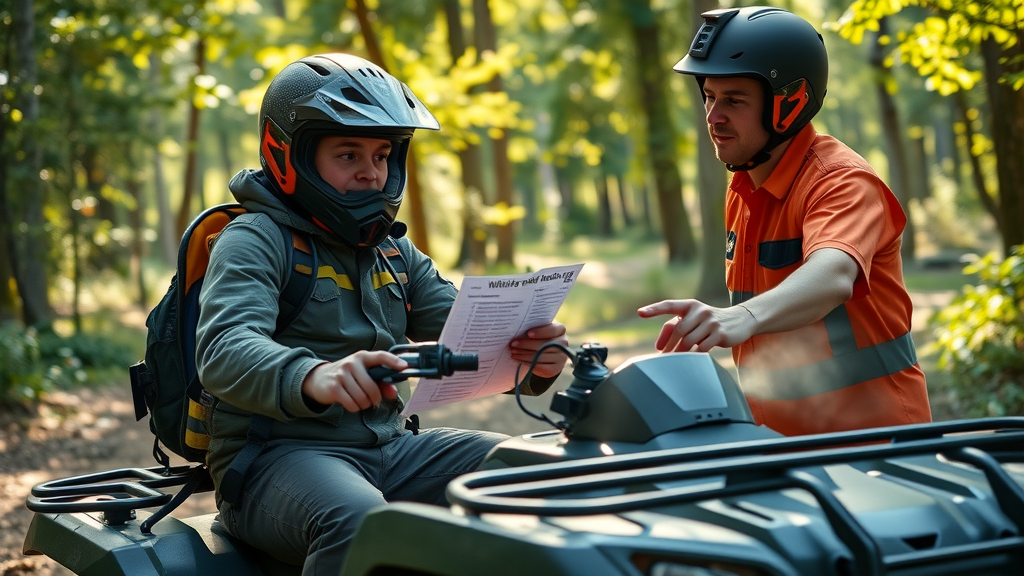
- What Readers Will Learn with Beginner ATV Riding Advice:
- How beginner ATV riding advice can reduce risk and save money
- Practical step-by-step riding tips for safe and enjoyable trail riding
- An overview of ATV safety fundamentals every rider must know
- Beginner mistakes during ATV riding and how to avoid them
"According to the Consumer Product Safety Commission, over 81,800 ATV-related injuries were reported in a recent year—many of which could have been prevented with the right beginner ATV riding advice."
Top Beginner ATV Riding Advice: Mastering Riding Tips for First-Time ATV Riders
If you’re about to start your ATV adventure , absorbing the right beginner ATV riding advice is the smartest move you can make. This isn’t just about memorizing rules—it’s about developing fundamental habits for safe, enjoyable, and repeatable trail riding. Many ATV riders unintentionally overlook key tasks, like thorough pre-ride inspections or proper riding gear, leading to preventable breakdowns or accidents.
Take the time to practice with each ride. Emphasize safety tips that experts swear by, including safe starting procedures, precise throttle control, and correct balancing methods. Practice rides in low-pressure environments—like gravel driveways or simple wooded trails—allow you to build confidence before exploring more demanding terrain.
Keep in mind, that reaching the status of a skilled ATV rider, able to tackle most trails and situations, doesn’t happen overnight. Use these step-by-step riding tips, and soon you’ll find the perfect blend of caution, skill, and enjoyment in every outing.
Step-by-Step Riding Tips for Starting Your ATV Adventure
- Pre-ride inspection essentials for beginners
- Safe ATV starting procedures
- Balancing and controlling your machine from the get-go
The start of your ATV experience should always include a pre-ride inspection . Look for proper tire pressure, secure fasteners, and working brakes—key tips every ATV rider should master before even turning the key. Pay close attention to nerf bars, heel guards, and the state of your controls. These small checks reduce the likelihood of malfunctions when you hit the trail .
Begin with safe ATV starting procedures: always mount your ATV from the left side, ensure it’s in neutral, and set the parking brake. Grip the handlebars firmly, keeping both feet on the footrests. Once started, test the throttle gently and check steering responsiveness in a clear, flat area.
Balancing your ATV is crucial, especially for first-timers. Start slow and focus on feeling how the weight shifts as you give light throttle inputs or squeeze the brakes. Practice standing up over bumps and leaning into turns. Take practice rides at a pace that’s comfortable for your skill level and always be ready to react. Consistent, step-by-step practice helps you build confidence and makes ATV riding not just fun but safe and enjoyable .
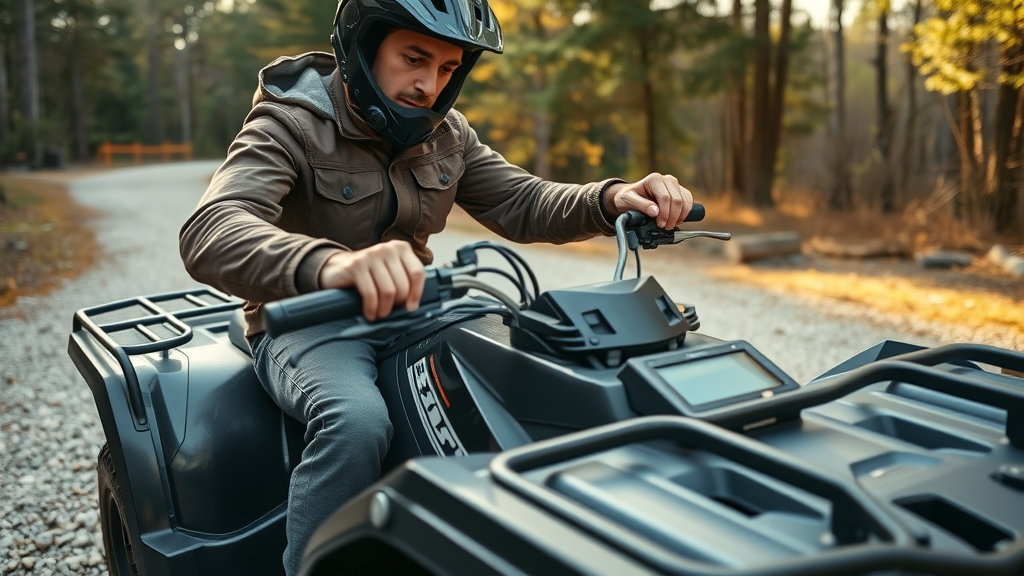
Must-Know ATV Safety Tips Every Beginner ATV Rider Should Follow
There’s no shortcut to ATV safety : wearing the correct safety gear and following expert advice is not just a good idea—it’s essential. Many beginner ATV riders underestimate their need for comprehensive protection, but accidents can happen to anyone, regardless of skill level. Veteran riders will tell you that sturdy boots, gloves, and protective clothing have saved them more than once.
Safety gear isn’t about looking the part; it’s about preventing painful, expensive injuries. Strong helmets, padded jackets, high-traction gloves, and durable boots should be your standard attire before every ride. This way, you ensure that you’re shielded from flying debris, rough terrain, or unexpected spills, especially as you tackle variable trail riding conditions.
Not all ATV riding gear is created equal. Prioritize quality, fit, and suitability for your intended riding environment. Choosing the right safety gear demonstrates respect for both yourself and the trails—plus, it sets a solid example for other new riders. Remember, investing in safety gear up-front means fewer medical bills down the road and ensures every ATV adventure is a positive experience.
Understanding ATV Safety Gear: Equipment for Every Trail Riding Experience
- Helmets
- Boots
- Gloves
- Protective clothing
- Eye protection
Helmets are absolutely non-negotiable for any ATV rider . Choose a DOT-rated or Snell-approved helmet that fits snugly and covers your entire head and face. Sturdy boots with ankle support protect your feet from impact and allow maximum grip on the footrests, while gloves give you a better hold on the controls and shield your hands from branches and debris.
Wear protective clothing such as abrasion-resistant jackets and pants; these minimize cuts and bruises if you fall or brush up against obstacles. Eye protection is vital for clear vision and to keep out dust and bugs. Each piece of gear brings unique benefits, working together to create a formidable barrier against injury so you can focus on improving your riding skills.
| Equipment | Description | Benefits | Estimated Cost |
|---|---|---|---|
| Helmet | Full-face or modular, DOT/Snell-rated | Head protection from impact, flying debris, weather | $75–$300+ |
| Boots | Reinforced toe/heel, ankle support | Prevents foot/ankle injuries, improved traction | $60–$200 |
| Gloves | Padded knuckles, non-slip grip | Protects hands, improves control | $20–$60 |
| Protective Clothing | Jacket and pants (abrasion-resistant) | Shields skin from scrapes, weather, and injury | $80–$250 |
| Eye Protection | Goggles or full-face shield | Prevents dust, dirt, and debris from affecting vision | $20–$90 |
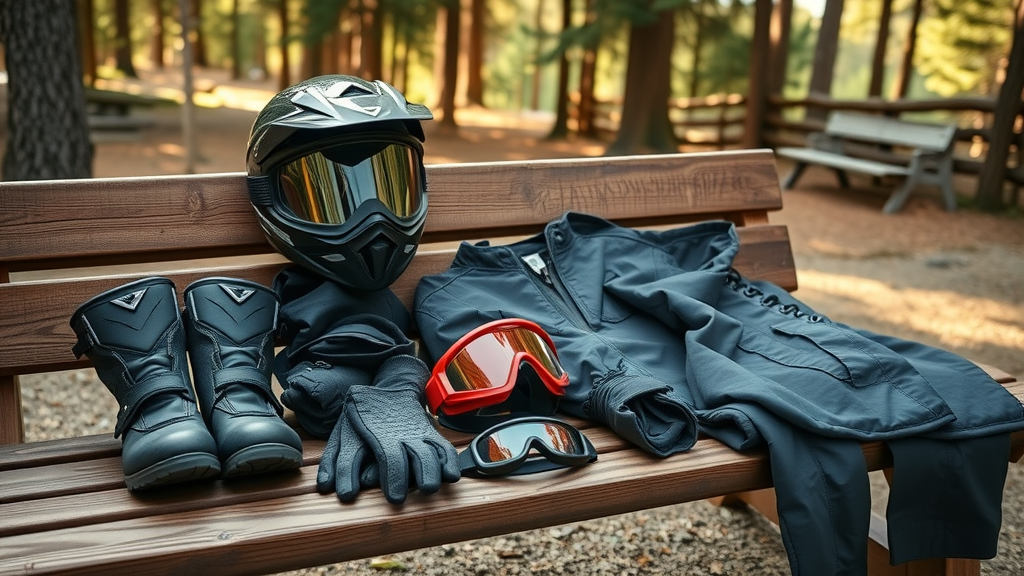
"Quality ATV safety gear is your best defense. Invest in it before your first trail riding adventure."
Fundamental ATV Riding Tips: Riding Position, Handling & Trail Riding Skills
Proper riding position and core riding techniques are critical to mastering ATV riding . Many beginners tend to sit too rigidly or shift their weight incorrectly, causing undue strain or loss of control on varied terrain. Experienced ATV riders advocate a dynamic approach—adjust your stance to the landscape and always be prepared to react.
Maintaining the right posture and learning how to handle your machine safely not only boosts comfort but also enhances your ability to navigate challenging trail riding scenarios. It's about more than just survival—it's about thriving and fully enjoying every ATV adventure . Even if you’re an absolute beginner, perfecting these basics early flattens your learning curve and reduces your risk of accidents.
The secret is repetition and continual mindfulness. With every new trail ridden, you’ll refine your technique, developing an instinct for when to stand, lean, or brace. Consistency with these safety tips ensures your time riding an ATV remains both safe and enjoyable, allowing you to explore new trails with growing confidence.
Perfecting Your ATV Riding Position for Maximum Safety and Comfort
- Correct sitting and standing positions for different terrains
- Maintaining balance during novice trail riding challenges
- Adjusting your stance for tricky slopes and corners
When tackling trail riding as a beginner, your riding position can mean the difference between conquering obstacles and losing control. For flat, smooth trails, stay seated with your knees gripping the seat and feet firmly planted on the footrests. Use your core to absorb minor bumps.
On rough terrain, adopt a semi-standing posture, with your body hovering an inch above the seat. Shift your weight forward when climbing hills and lean back when descending. For sharp turns or off-camber trails, lean into the inside of the turn, mirroring your ATV’s movement to maintain balance.
Always adjust your stance as conditions change. This flexibility in riding position enhances balance, absorbs shocks, and reduces fatigue. The more you ride, the more intuitive these adjustments will become. Mastering these habits early prepares you for any trail conditions you might encounter, from rocky paths to muddy stretches, and helps keep your rides both safe and enjoyable.

Trail Riding Techniques: Beginner ATV Riding Advice for Diverse Terrain
- Navigating mud, sand, and rocks safely
- Choosing the best riding lines
- Using beginner-friendly throttle and brake control
Beginner ATV riding advice isn’t just for smooth trails. Your ability to adjust to mud, sand, and rocks is key to growing as an ATV rider . For muddy paths, keep a steady throttle, avoid sudden accelerations, and use low gear for consistent traction. In sand, lighten your grip, stand slightly on the footrests, and maintain momentum to prevent bogging down.
When traversing rocks and uneven terrain, slow down and choose lines that minimize the risk of high-centering your ATV. Approach obstacles head-on (whenever possible) and let your machine roll over them at a controlled speed. Beginner riders should avoid jerky throttle inputs or harsh braking, focusing instead on smooth, gradual controls—key tips to prevent loss of balance.
Experienced ATV riders stress the importance of anticipation. Scan ahead for trail changes and pre-plan your moves. As your confidence grows, practice with more advanced lines, but always respect your skill level and the terrain. The right riding tips will keep your adventure thrilling but safe.
Proven ATV Safety Rules: Protecting Beginner ATV Riders at All Times
Safe ATV riding isn’t just a matter of preference—it’s governed by time-tested ATV safety rules, refined over decades by expert instructors and veteran ATV riders . Adhering to these ATV riding guidelines will not only make your outings safer but also protect your fellow riders and the environment.
Embrace these foundational safety tips before every ride. From choosing the right riding gear to staying mindful of trail rules, beginner ATV riding advice is the key to a long, injury-free riding journey. The rules may seem strict, but they're designed to minimize risks, ensuring that every ATV beginner can enjoy their trail adventures with peace of mind.
Reinforce these habits with each outing. Whether you're venturing into rocky mountains, lush forests, or open fields, consistent respect for ATV safety rules is a mark of a responsible rider. Let these guidelines shape your riding from day one, and soon they’ll become second nature.
- The 8 Golden Rules of ATV Safety for Novice Riders
- Always wear a helmet and complete safety gear.
- Never ride on paved roads except to cross safely.
- Do not carry passengers unless your ATV is designed for more than one person.
- Do not operate an ATV under the influence of drugs or alcohol.
- Ride only on designated trails and at a safe speed matching your skill level and trail conditions.
- Never ride alone; inform someone of your route if you do.
- Supervise young or inexperienced ATV riders at all times.
- Follow local laws, trail rules, and manufacturer’s guidelines without exception.
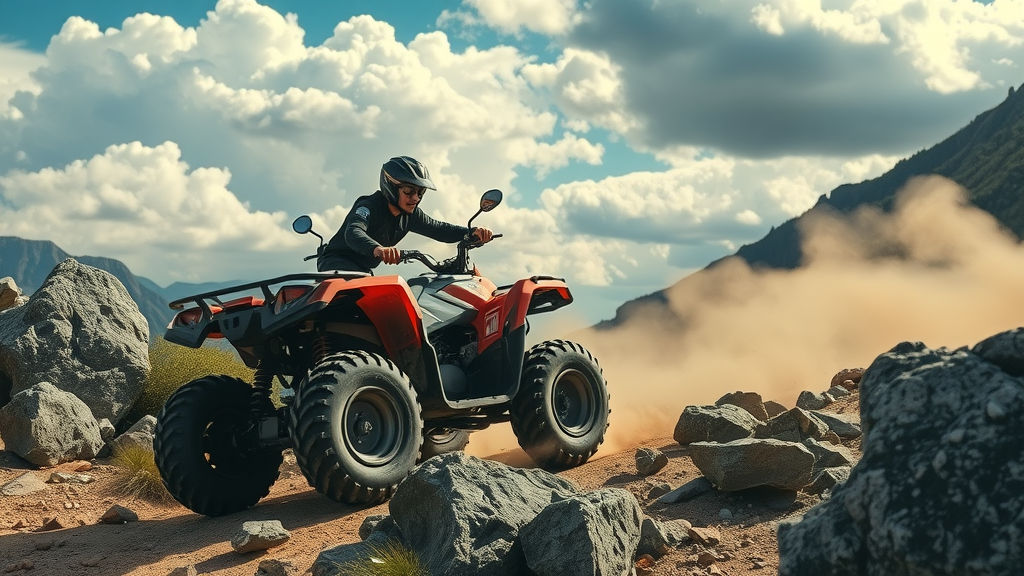
- The Do's and Don'ts of ATV Riding Every New Rider Needs to Know:
- Do: Wear protective gear, follow safety tips, check your ATV before riding, and ride within your limits.
- Don't: Attempt stunts, ride under the influence, carry extra passengers, or ignore trail and safety signs.
Common Mistakes Beginners Make (and How Beginner ATV Riding Advice Helps Avoid Them)
- Overconfidence and underestimating terrain
- Ignoring safety gear requirements
- Neglecting pre-ride inspections
- Riding alone and without preparation
Even the most enthusiastic new riders can fall into the trap of overconfidence. It’s tempting to think you can handle any obstacle after a few practice rides, but underestimating challenging terrain quickly leads to emergencies. That’s why the best advice is to pace yourself: master trails at your own skill level, noting your reactions to steep climbs, mud, or unexpected bumps.
Many beginners also “forget” key rules about safety gear—leaving behind sturdy boots or skipping their helmet for a quick loop. Unfortunately, it only takes one mishap to reveal why these rules exist. Neglecting simple pre-ride checks is another common error that results in mechanical surprises. A flat tire, a loose chain, or inactive brakes could derail your ride before it starts.
Lastly, riding alone without alerting someone is a mistake seasoned ATV riders warn against. Mechanical issues or minor injuries become more serious if you’re isolated. Start by riding with experienced companions, building confidence as a group, so you're ready to handle any adventure.
This demonstration walks you through pre-ride inspections, correct mounting, and essential startup safety checks—everything you need to start your ATV safely and confidently on your first outing.
Before you hit the trail, watch this comprehensive guide on how adopting a safety-first mindset and choosing the right riding gear can transform your first trail riding experience. You'll see real-world examples of how preparation, protective gear, and mindfulness lead to safer, more enjoyable rides.
Beginner ATV Riding Advice: Frequently Asked Questions
How to ride an ATV for the first time?
- Step-by-step for mounting, starting, and basic operation for first-timers
For your first ATV ride, begin by wearing full safety gear—including helmet, boots, and gloves. Approach your ATV from the left side, check to ensure it’s in neutral, and set the parking brake. Mount carefully, keeping hands on the handlebars and feet on the footrests. Start the engine following manufacturer instructions and gently test the throttle and brakes in an open space. Practice turning, accelerating smoothly, and stopping until you feel steady before heading onto more challenging trails.
What is the first thing you should do when starting an ATV?
- Explanation of pre-start safety checks and startup technique
The first step is conducting a thorough pre-ride inspection. Check tire pressure, brake functionality, and all controls. Make sure your helmet and other protective gear are properly secured. Set the ATV to neutral, apply the parking brake, and use the key or starter button to fire up the engine. Let it idle briefly and listen for unusual sounds before proceeding with your ride.
What are the 8 golden rules of ATV safety?
- Clear bullet points of the essential safety guidelines
The eight golden safety rules include always wearing full safety gear, avoiding paved roads, not carrying passengers unless allowed, never riding under the influence, sticking to designated trails, having company or sharing your ride plan, supervising younger or inexperienced riders, and following all local and manufacturer guidelines without fail.
What are the do's and don'ts of ATV riding?
- List of proven safe practices and common pitfalls for beginners
Do: Wear protective gear each time you ride, inspect your ATV before every outing, build confidence gradually, respect trail rules, and practice defensive riding. Don’t: Attempt risky stunts, skip safety checks, ride too fast for your skill level, or disregard signs and regulations.
Essential Beginner ATV Riding Advice Recap: Start Your Trail Riding Journey Safely
"The trail doesn’t care if you’re new—preparation and following solid beginner ATV riding advice makes all the difference."
Action leads to confidence: inspect your ATV, gear up, apply what you’ve learned, and approach every trail ride with the right mindset. Let these proven beginner ATV riding tips be your guide to safer, more enjoyable adventures starting today.
Ready for the Trails? Put Beginner ATV Riding Advice Into Action Today!
Don’t just read—ride smart! Begin your ATV journey with these safety fundamentals, practical riding tips, and expert-backed advice. Your confidence, enjoyment, and safety will all grow with every mile. Share your ATV riding progress with friends—and enjoy every moment on the trails!
 Add Row
Add Row  Add
Add 

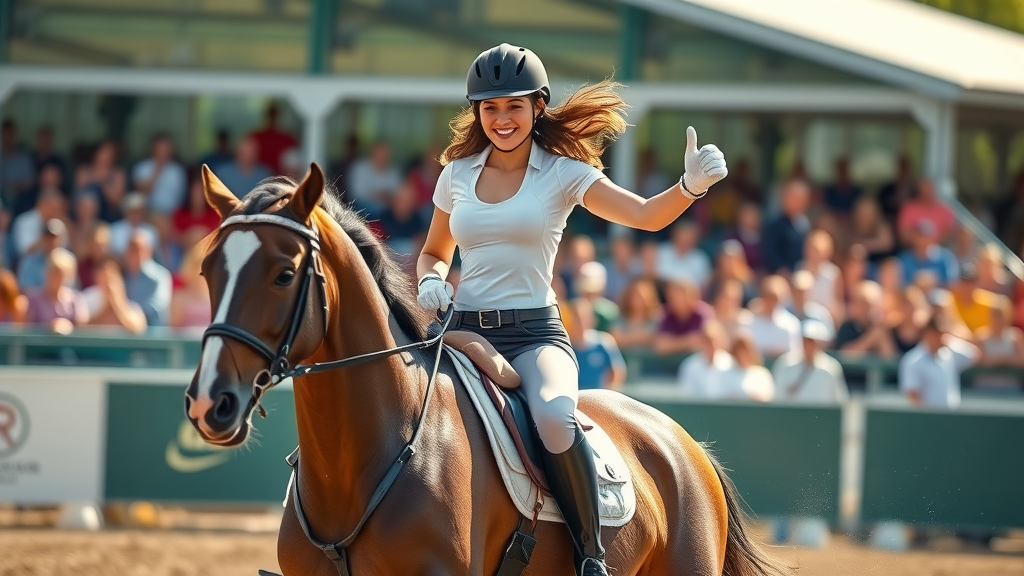
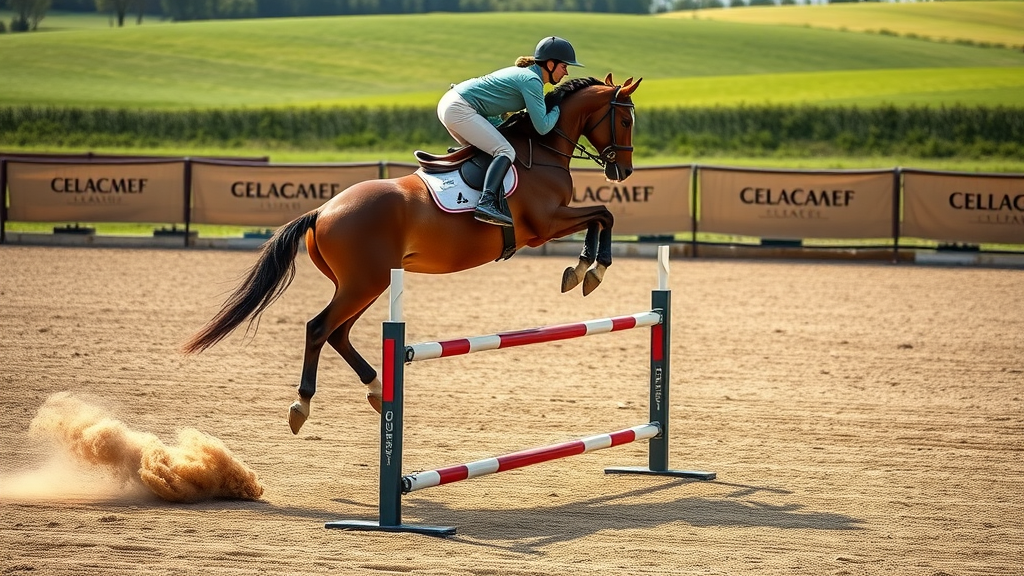

Write A Comment